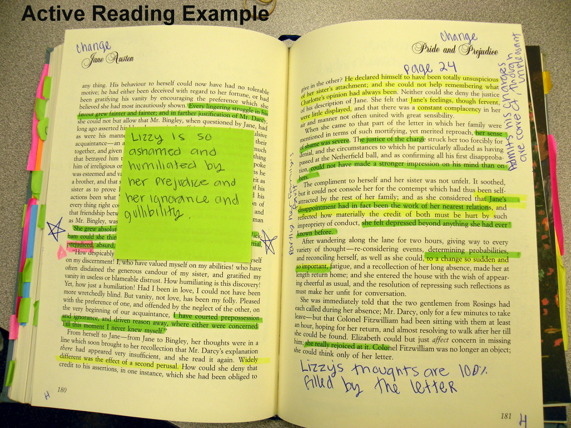For more of Aidan’s English advice, check out these free VCE English revision videos.
The newest addition to study design, Comparative Text Response, is easily one of the hardest areas of study in the VCE English course. In addition to being worth a whopping 60% of your Unit 4 mark, it also reprises its role in the end of year exam!
With twice as many texts to study, it’s imperative that you start to analyse your texts in the most efficient way possible from the moment you sit down to read them to ensure that you’re ready for the most important SAC of the year.
Why do we annotate our texts?
Reading through your texts once or twice and ‘thinking’ about them while you ‘treat yo self’ to a binge session of your latest Netflix addition isn’t an ideal English study session, and being blunt, neither is highlighting – no matter how many different colours you use!
Highlighting your text as you read isn’t helping you to analyse your texts, it’s helping you to recognise important pieces of information the next time you turn to that page. In order to engage in active learning and ensure you’re analysing your text on the pages, any highlighted passages need to be accompanied by annotations! This allows for a deeper reading and understanding of the text that lasts, allows you to revisit your thoughts at any time and is an essential building block between reading the text and writing about it.
What can I annotate?
When it comes to analysing texts, you can assume that everything is important! Authors and playwrights spend years planning every last detail of characters, events, scene descriptions, and even directors spend countless nights thinking about every camera angle and the editing techniques they could apply to the final product.
Annotations could also include:
Defining vocab, terms or references to help you understand the text
Identifying important moments in the plot e.g. conflict/tension
Commenting on info about characters and character development
Connecting the text to views and values of society/the author
Noting details about setting, time period, culture, ‘zeitgeist’ of the story
Analysing literary devices à figurative language, descriptions, symbol, narrative, sentence structure, mood, style, foreshadowing
Recognising big picture ideas/themes that emerge from the text
The key idea here is to be analysing elements of text response (Views and Values, Character, Themes and Structural Devices) on the pages – not simply highlighting information so it’s easier to find later on. So always ask yourself questions such as: Why is this section of text important? How could I use this quote to make *insert argument* in an essay? How does the author use this structural device? How do all of these elements work together, and write it down!
With your text annotated, and some killer analysis already in the margins of your pages, it’s much easier to start to convert this into mini analyses, and then later into amazing, in-depth essays. However, it’s imperative that you lay the groundwork now!
If you haven’t already done so, make sure to check out this incredible forum post by our English extraordinaire Lauren about how to structure your comparative text response essays in order to start essay writing for this outcome, or mini-analyses as the next building block.
Enjoy your reading!







